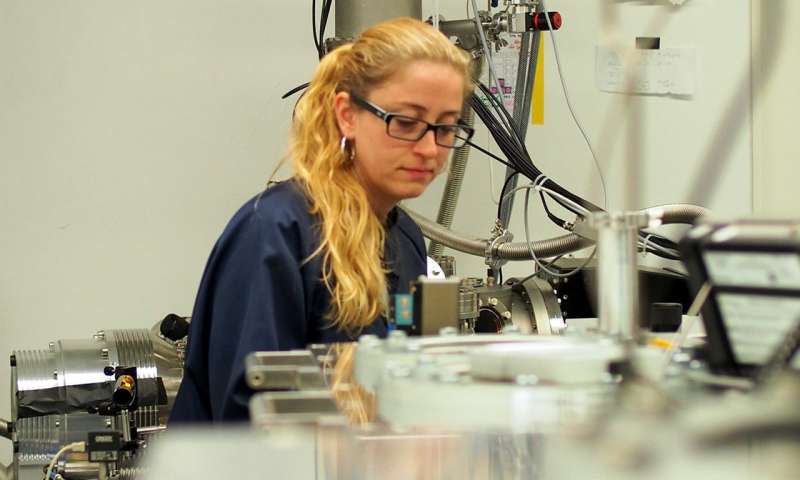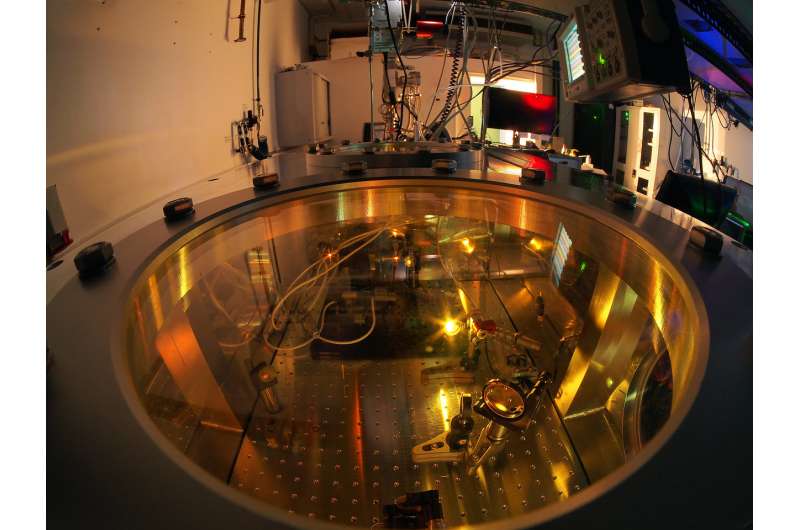Observing and controlling ultrafast processes with attosecond resolution

Many chemical processes run so quickly that they are only roughly understood. To clarify these processes, a team from the Technical University of Munich (TUM) has now developed a methodology with a resolution of quintillionths of a second. The new technology could enhance the understanding of processes like photosynthesis and contribute to the development of faster computer chips.
An important intermediary step in many chemical processes is ionization. A typical example of this is photosynthesis. The reactions take only a few femtoseconds (quadrillionths of a second), or even a few hundred attoseconds (quintillionths of a second). Because they run so extremely fast, only the initial and final products are known, but not the reaction paths or the intermediate products.
To observe such ultrafast processes, science needs a measurement technology that is faster than the observed process itself. So-called "pump-probe spectroscopy" makes this possible. Here, the sample is excited using an initial laser pulse, which sets the reaction into motion. A second, time-delayed pulse queries the momentary state of the process. Multiple repetitions of the reaction with different time delays result in individual stop-motion images, which can then be compiled into a film clip.
Now, a team of scientists headed by Birgitta Bernhardt at TU Munich have combined two pump-probe spectroscopy techniques using the inert gas krypton. This allowed them to visualize the ultrafast ionization processes with a precision that was previously impossible.

"Prior to our experiment, one could observe either which part of the exciting light was absorbed by the sample over time or measure what kind of and how many ions were created in the process," explains Bernhardt. "We have now combined the two techniques, which allows us to observe the precise steps by which the ionization takes place, how long these intermediate products exist and what precisely the exciting laser pulse causes in the sample."
Ultrafast processes under control
The combination of the two measuring techniques allows the scientists to record the ultrafast ionization processes and, thanks to the variation in the intensity of the second probing laser pulse, they can also control and influence the ionization dynamics.
"This kind of control is a very powerful instrument," explains Bernhardt. "If we can precisely understand and even influence fast ionization processes, we are able to learn a lot about light-driven processes like photosynthesis—especially about the initial moments in which this complex machinery is set into motion and which was not understood to date."
The technology developed by Bernhardt and her colleagues is also interesting for the development of new, faster computer chips in which the ionization of silicon plays a significant role. If the ionization states of silicon can not only be sampled on such a short time scale, but can also be set—as the first experiments with krypton suggest—scientists might one day be able to use this to develop novel and even faster computer technologies.
More information: Konrad Hütten et al, Ultrafast quantum control of ionization dynamics in krypton, Nature Communications (2018). DOI: 10.1038/s41467-018-03122-1
Journal information: Nature Communications
Provided by Technical University Munich




















